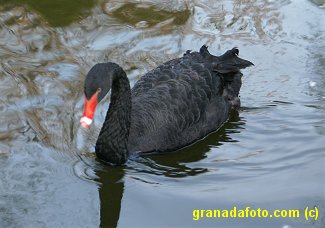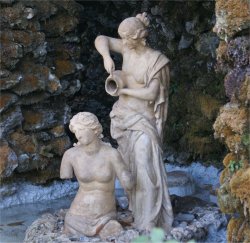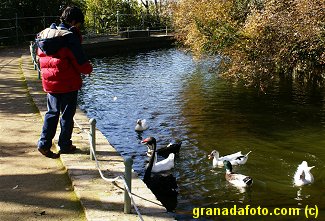|
Carmen de los Mártires
is a 19th century house and ornamental grounds just to
the right of the Alhambra palace. There are some interesting views
of the Alhambra from the other side and great views of the city of
Granada and the Sierra Nevada. The gardens contain a number of statues,
grottoes, and an ornamental duck pond with its bridge and tower-like
ruins. This
is
a great place to go for a stroll around, to eat your sandwiches, or
even to feed the ducks and the black swan; if you're lucky, you
might even see some of the peacocks and peahens that live in gardens.
You
can either walk up from Campo de Principe (behind the cross) or Plaza
Nueva or catch the minibus to the Alhambra from Plaza Nueva.
|
 |
 |
Years ago, military
jousts and tournaments were held here and in Moorish times provisions
were
stored for the fortress. The area was also known as the "Campo
de los Cautivos" after the Christian captives who were held
here and forced to carry out building work on the Royal palaces.
It is thought
that as many as 7000 prisoners could be held in the huge, deep dungeons
tunnelled into the rock and many died
during
the siege
of
the city
towards the end of the 15th century when the Catholic monarchs siezed
control of Granada from the Moors. |
|
Following the conquest
of Granada by the Catholic Monarchs, Queen Isabel first built a shrine
here to the martyrs who had died. In 1573, a convent was established
(St. John of the Cross was Prior here for six years from 1582, and
was supposedly responsible for planting one of the larger cedar trees)
and a new church was built to replace the original shrine between 1614
and 1620. The convent, however, was later destroyed in 1842 although the
convent garden has since been restored.
|
 |
 |
The house "Carmen
de los Mártires" was built by Don Carlos Calderón
who purchased the land for his summer residence, and the grounds
were landscaped by a subsequent owner,
Hubert
Meermans, who was responsible for creating the different style gardens
on various
levels, with their fountains, statues, and grottoes and the ornamental
lake with its wooden bridge and tower. Subsequent plans for a hotel
conversion fell through, and after many years of neglect, the house
and gardens have finally been restored to their former glory. |
|
|
|
|